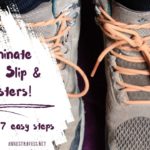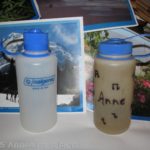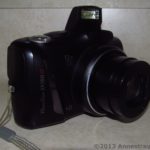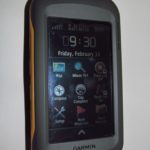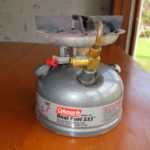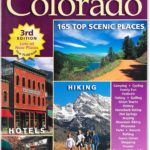If you know me, you know that some of my favorite stores are well-stocked thrift shops. And that there’s nothing I enjoy quite like a great deal at a garage sale. But if you find hiking gear at a garage sale or thrift shop, should you buy it? Or should you get your gear from a reputable outdoor store?
In this post, I’d like to detail some of the things to look for at thrift shops and garage sales, and what things you’ll want to get brand-new. Because while some gear is totally fine used or secondhand, there are other things you’ll definitely want to buy firsthand.

Remember, every part of the country (or state, or town) has its own unique preferences when it comes to taste, style, and quality. I’ve heard that thrift shops in Denver are bursting with used brand-name athletic equipment, while other areas may not have quite such a large selection. And depending on your area, you may want to pass on certain items. Use your best judgment!
Also, many outdoor shops are owned by small business owners. Don’t forget to support your local businesses as well as get great deals!
Best Hiking Gear to Buy at a Thrift Shop or a Garage Sale
Backpacks & Day Packs
Many shops carry a good selection of daypacks because, well, every child needs a new backpack for every school year. Often, the packs have been lightly used and are perfect for day hiking. I’ve picked up brands including JanSport (one of my favorite packs!), L.L. Bean, and Eddie Bauer. If you can find a backpack, they’re also often lightly used and still have quite a lot of wear left in them.
What to Look For: Is the pack worn, especially on the bottom? Are there holes in the pockets? Is it so out of date that you can do better elsewhere? Try ALL of the zippers, buckles, and clasps. Try on the pack. Is it comfortable? Find a mirror (for example, in a changing room) to make sure it fits your torso. I like waist straps, even on daypacks. Be sure it has any pockets you really need – like side pockets for water bottles.
When You Get Home: Air out the pack, washing it if possible (probably by hand) with soap and water.

Athletic and Hiking Clothing
Most well-stocked thrift shops have a large selection of clothing. Some will separate out the athletic wear, while others require digging through the crop tops and blue jeans. The good news is that most of these items of clothing have been lightly or never used – the original owners thought they’d get into running, or they purchased it online and then it didn’t fit right. Then they donated the shirt or leggings they never used, anyway. An added bonus is that you can often find brand names at a fraction of the cost of buying it new!
What to Look For: Athletic shirts, hiking pants/shorts, base layers, etc. Check for holes (especially in the arms of shirts and knees/seats of pants) and general wear. Look the clothing over for stains. Bonus if you can try on the clothing before purchasing. Brand names are always a plus, but be an informed shopper about material content (cotton vs. polyester, for example) as many knockoffs are just as good.
When You Get Home: Always wash athletic wear before wearing. Always, always, always. Be careful to follow the washing instructions. If you can’t find any instructions, most athletic wear should be washed cold and hung or laid flat to dry.
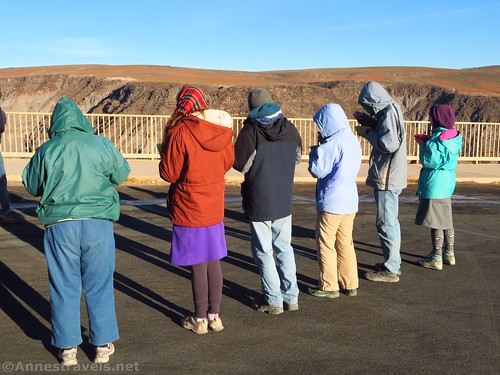
Jackets & Outerwear
Like athletic wear, many well-stocked thrift shops have jackets and outerwear for sale – garage sales also tend toward jackets and winterwear. You might even score a brand name. For example, I was at a thrift shop a few weeks ago and found a $200 Columbia Interchange Jacket – for $8. (It had some wear on the sleeves, but not enough to make me pass it by.) Gloves and other winter wear can also be a good buy and are prolific at yard sales.
What to Look For: Wear and stains, especially on the sleeves and cuffs. Check ALL zippers, clips, snaps, and closures. Does it have all elements – a hood or linings, for example? Does it have any important features (pit zips, pockets, hood, etc.)? Are the gloves, etc., made for the outdoors or for aesthetics only?
When You Get Home: Wash according to washing instructions (especially gloves, hats, etc.). If the tag has been cut, most jackets can be washed cold (inside out) and then hung or laid flat to dry. Winter wear should usually be hand-washed and laid flat to dry unless otherwise specified.
Water Bottles
I can’t tell you how many Nalgene water bottles I’ve purchased at garage sales and thrift shops, usually for under $2. There are so many on the market, and people use them for a limited time (apparently). Most appear to have never been used at all.
What to Look For: Always unscrew the top and sniff inside – something tells me that you have enough funky-smelling water bottles without paying for another. Try to get name brands like Nalgene, Camelback, Yeti, Hydro-Flask, etc. as these are more likely to maintain their seal (and not leak). Examine the bottle and lid to catch any signs of mold (certain models are notorious for mold in unreachable places) and discoloration, stains, wear, missing straws, etc.
When You Get Home: You’ll want to wash the bottle. Put it through the dishwasher if you can. If not, use very hot water and anti-bacterial soap. Scrub it well – you don’t want any residual germs!

Pots & Pans
I don’t often find backpacking pots and pans at garage sales, let alone thrift shops, but when I do, it’s often a good deal. On his way home from work, one of my group members stopped at a garage sale. He wanted to buy a baby stroller but felt the price was too high. He tried to talk down the price, but instead, the seller started throwing in outdoor gear to sweeten the deal. Before he knew what was happening, this group member was walking out of the sale with a three-pot cook kit, an army-grade outdoor blanket, a wetsuit and snorkel set, a book selling for $400 on Amazon detailing hiking in the Absaroka Mountains of Wyoming, and last, but not least, a couple of packets of freeze-dried backpacking food. Strange things do happen!
What to Look For: If it looks gimmicky, it probably is. Now, if you want that gimmick, it’s not so bad (campfire hand-pies, anyone?). Look for wear, holes that shouldn’t be there, and practical things like how you’ll take it off of your stove (does it have a handle?) Also, consider how it will add to your current lineup and whether it will fit your needs in terms of size, weight, etc.
When you Get Home: Wash it! Like, scrub it very well! Put it through the dishwasher if you can (most pots I’ve met have been just fine in the dishwasher).
Maps/Hiking Books
Last summer, I ended up at a garage sale where several adult children were selling off their parents’ house full of stuff. The parents must have been avid hikers because I ended up with a stack of hiking books for my region. I was thrilled. I’ve had some of those books out of the library multiple times! If you can find hiking books (especially FalconGuides and local/regional guides) and maps (for example, National Geographic topo maps), they’re a pretty safe bet and often a very good buy.
What to Look For: Thumb through the book or open up the map. Is it intact? Obviously missing pages? Falling apart at the folds? Has it been damaged by water or outrageously worn? Are there useful notes in the margins that will be helpful to you? Does it have a funny smell or signs of mold between the pages?
When You Get Home: Put it on your bookshelf. Or plan a trip!
Hiking Gear to Buy at a Thrift Shop – With Caution
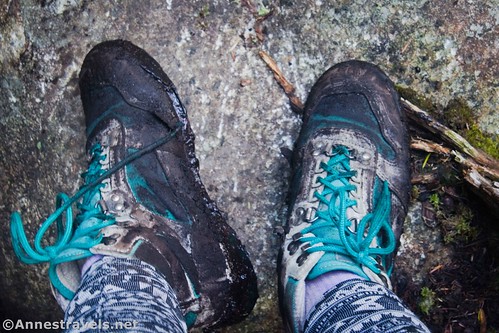
Hiking Boots/Shoes
This is a hard one. I sometimes find barely-used boots and shoes; other times, I know exactly why it was donated! (Like the time I tried on a pair of hiking boots so full of burs and grass seeds I couldn’t stand it, so the missing shoe lace hook didn’t bother me.) If possible, walk around the thrift shop or sale to get a feel for the shoe or boot before purchasing. Note: In some places, it’s really not a good idea to buy used shoes. If that’s your area, just don’t.
What to Look For: Wear, especially inside and on the sole. Are the grommets (show lace holes) or shoe lace hooks unreasonably worn? Will you need to replace the shoelaces due to wear? Are the heels/toes sunken? Is it a good brand? (In my experience, name brands hold up better than off-brands.)
When you Get Home: Wipe them (inside and outside) with a sanitizing wipe. Allow them to air out outside, if possible.

Sleeping Bags
Another difficult one, you really need to know what type of bag you want and how they work before picking up a random bag at a thrift shop or garage sale. But they can be found. I purchased a really nice Coleman sleeping bag a few years ago at a thrift shop for $5 – and one of my group members immediately claimed it as her own! (That’s what I got it for!)
What to Look For: Check the zipper, two or three times. Look inside for wear, especially if the lining is flannel or other soft fabric. Check the outside for holes, bunching of the filling, and discoloration that may indicate sun damage. Brand names generally are better than no-name brands. See if you can find a temperature rating, and realize that this is a generalization that doesn’t hold up in real life. Think about the weight – is this something you can carry if you’re a backpacker?
When you Get Home: Wash it! This typically can only be done in a commercial-size washer, though you may be able to get away with the one at home if you can remove the agitator from your washing machine. Or you can go for the hillbilly method, which involves a chain-link fence, a garden hose, a scrub brush, and a pot full of soapy water…
Traction Devices
Inexpensive traction devices are popular at thrift shops because plenty of people try them out and then use them… or not. If you can find more hefty traction devices in good shape, you’ve hit the jackpot.
What to Look For: Make sure they’re sized for you and fit on your shoes or boots. Also, check for wear and make sure all straps, etc., are in good working condition.
When you Get Home: Put them away for next winter or your next icy adventure!
Compass
You wouldn’t believe the number of compasses I’ve found at garage sales and thrift shops! Apparently, people don’t know how to use them anymore. Or maybe they received a compass as a gift or they had to buy five for the boy scouts in their life…
What to Look For: Check to make sure it works. This will likely include matching up the swinging needle with a compass app on your phone. If it doesn’t work, don’t buy it! There are a lot of dinky compasses on the market.
When you Get Home: I’d sanitize it with a wipe, but that’s up to you.

Tent
Now you’re really living dangerously! Tents from thrift shops and garage sales may be there because they’re very good but unused. Or they may be of very poor quality and unused. At this point, it’s a good idea to know what brands/styles you want.
What to Look For: Name brands are often best, though off-brands may be just fine. Try taking it out of the bag. Does it have all of its poles? Do the zippers work? Are there any holes or other damage? Is it discolored (a sign of sun damage)? Can you easily set it up? Is it light enough to carry if you have to walk to a campsite? Is it big enough to fit your needs? Are there signs of mold? Does it smell so funny that you won’t be able to sleep once you’re inside it? If you can, ask the garage sale owner if he or she knows how much the tent was used, why they’re getting rid of it, etc. I’ve had a few people lie to me, but in general, most are pretty honest as long as you’re nice about it.
When you Get Home: Air out the tent if possible. Be sure you know how to set it up before going on a camping trip!
Hiking Gear to Not Buy at a Thrift Shop
Camp Stoves
Camping stoves are finicky and very difficult to test in a thrift shop. They work great – usually – until they don’t. If someone is selling their stove, it’s very likely because it isn’t working quite right. So I’d steer clear of camping stoves and buy those new.
First-aid Kit
You want quality first aid materials when you’re out on the trail and something goes sideways. And you also want to make sure that the sterilized items are actually clean. So buying a questionable kit is probably not a good idea. That said, if you know what you’re looking for and you can look through the contents of the kit before buying, you may end up with a good deal.
Flashlights & Headlamps
Again, these tend to break, so I’d recommend against buying a flashlight or a headlamp without being able to test it out. I got lucky with three headlamps I purchased at a garage sale (they’re Rayovac), but I figured that $0.75/each wasn’t wasting much! In general, if you’re going to go this direction, look for name brands.
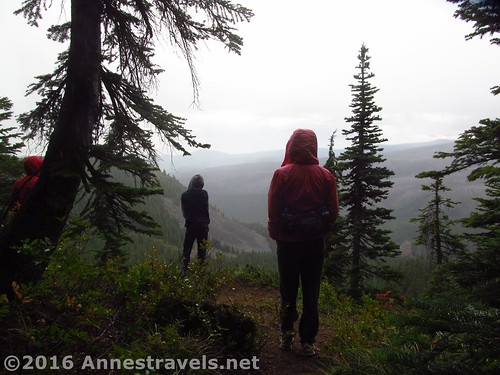
Rainwear
If you find an emergency rain poncho at the thrift shop for $0.99 (and you need a poncho), by all means, get it! But in general, I try to steer clear of anything that is supposed to be waterproof, is used, and I can’t test it out before purchasing. So unless it’s new or obviously going to work for you, I’d recommend against trying to waterproof yourself secondhand.
What hiking gear do you look for at thrift shops and garage sales? I’d love to know!
This Week’s Featured Product!
I’ve been using this daypack for a little over a year. It holds all my gear plus so much more – and it has pockets for everything! Buy yours here.











